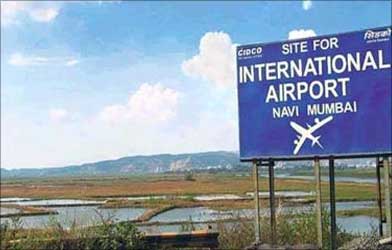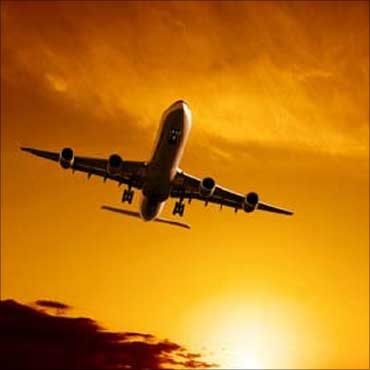Dorab R Sopariwala
Dorab R Sopariwala says it is likely that politicians, or their benamis, bought a fair amount of land just before the decision to build an airport in Navi Mumbai was announced.
For several years, there has been a move to construct a second airport in Mumbai as it is believed that the present Santa Cruz airport will soon reach its saturation point.
However, what has been conspicuous by its absence is the use of any method in determining the extent to which the current airport can be extended to serve the purpose and, in the event that it cannot, the relative merits of alternative sites.
There has been little public debate; no public enquiry; no short-list of alternative sites; and no cost-benefit analysis of the sites in the public domain.
Politicians have decided that the second airport has to be in Navi Mumbai and are pushing it like mad, regardless of any significant study of the impact on the environment or on the cost-benefit assessment of the project.
Knowing the politicians of Maharashtra, it is likely that they, or their benamis, have bought a fair amount of land before the decision to build an airport in Navi Mumbai was announced.
...
All that is wrong with Mumbai's 2nd airport
Image: Environment Minister Jairam Ramesh has refused to give clearance to the airport project.The Maharashtra government is to approach the prime minister to persuade him to 'lean' on Jairam Ramesh to waive his environmental objections.
The PM should, however, ask the Maharashtra government to conduct a public enquiry presided over by a judge and present a logical case for the airport. A number of steps have to be taken before finalising the site.
Initially, there needs to be a list of alternative sites. For instance, when a new airport was planned for London several decades ago, the Roskill Commission was appointed and a 'first cut' list of 78 sites was prepared.
These sites were examined for factors such as physical obstructions, proximity to air force/civilian airfields, noise levels, damage to monuments, etc., and the list was cut from 78 to four short-listed sites.
Surely, we can prepare a list of six-to-eight alternative sites and, after screening, come to a short-list of three-to-four.
For the short-listed sites, it is necessary to prepare a forecast of the traffic - separately for business and leisure travel for up to 20 years.
The forecast for each site is likely to be different because the catchment areas for the sites are unlikely to be the same.
...
All that is wrong with Mumbai's 2nd airport
Image: The arrival lounge of an airport.The time and cost savings (net) to users for each location have to be computed separately for business and leisure travellers.
For some persons, one site will be more convenient in terms of time spent getting there, and it will be less convenient for other persons.
A survey needs to be conducted of traffic movements and the projected business and leisure movements.
Airports provide employment. In an area of relatively high unemployment, employment at the airport would make an addition to the income generated in the area and a multiplier effect; in an area of near-full employment, the net benefit would be more limited as the airport employees would come from other jobs.
Airport is a commercial enterprise.
Thus, the profitability of the airport at the different short-listed sites would need to be computed. Would the profits from each site be adequate to service and pay back the loans?
This would be computed based on the cost and revenue, which would be based primarily on the traffic forecasts.
...
All that is wrong with Mumbai's 2nd airport
Image: A plane takes off as the sun goes down.Every airport brings noise pollution with it and it would vary from site to site.
Noise contours can be produced for each site and for alternative traffic forecasts for each site. Cost estimates have to be assigned to each site based on the hardship caused by aircraft noise.
A new airport may result in damage to sites of architectural interest, to mangroves/forests, to coastlines, to fisheries, to amenities and to recreation sites. Rivers may need to be diverted and hillocks cut.
One would have to make an inventory of such places at each site and then make estimates of the cost of the damage caused.
If any of the sites is close to a defence establishment (and one potential site for the new airport is on IAF land), then the additional cost for that site has to be estimated.
The cost would be in two parts: the cost of replacing or adapting the military establishment; the cost assignable to any interference with defence air traffic facilities and the freedom of action in protected military flight safety zones.
...
All that is wrong with Mumbai's 2nd airport
Image: There are also costs resulting at some sites from the loss of agricultural land.There are also costs resulting at some sites from the loss of agricultural land, e.g. around Panvel. This would include the loss of farmers' incomes and the loss of agricultural buildings.
One of the most important costs is the capital cost. This would have to be computed for each alternative site.
This would cover land and property purchase, site clearance, earthworks, construction of the airport, runways, terminals, air traffic control, etc.
Moreover, the cost of road/rail links that may have to be specially built would have to be assessed.
An airport is built for the next 20-30 years at least. It is apparent that very little work has been carried out by the government to ensure that public money is well spent.
There are no studies, no comparative cost-benefit analyses, no public debate, no public enquiry - just an attempt to rush through a half-baked idea.
This may be a great way for some politicians to make money but it is no way to build an airport.
The author was associated with two airport location projects in England







article